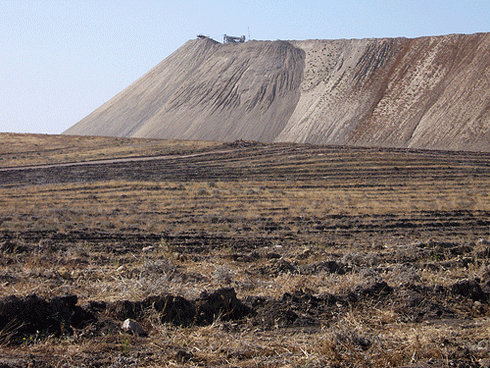
|
Published: 5 March 2012
Phosphorus scarcity takes centre stage
A looming peak in phosphorus production for fertiliser has gone relatively unnoticed said organisers of an international summit in Sydney last week.

|
|
Khourigba phosphate mine, in Moroccan-occupied Western Sahara. The largest reserves of phosphate in the world are in Morocco and the western Sahara. Phosphates and by-products, such as di-ammonium phosphate and mono-ammonium phosphate fertilisers, are Morocco's biggest export earners. Credit:
Pietro Fabeni
|
The 3rd Sustainable Phosphorus Summit was held at the University of Technology Sydney.
Bringing together a diverse group of international and local industry, policy, scientific and food security specialists, the summit built on the fledgling interest in long-term phosphorus security, sparked by the 800 per cent price spike of phosphate commodities in 2008.
‘It is expected that global supplies of concentrated high-grade phosphate rock may run out in the next 100 years under current usage patterns,’ said Professor Stuart White, Director of the UTS Institute for Sustainable Futures (ISF), which is hosting the summit.
According to Professor White, shortages of phosphorous, a major plant nutrient, have the potential ‘to generate significant price increases, particularly as reserves occur in a relatively small number of countries, notably China and Morocco.
‘This has serious implications for the world's ability to feed itself as population increases – the human body needs phosphorus to function, which it gets from food. Much of what we eat, in turn, comes from the phosphorus in soils that enables crops to grow.
‘Yet the public remains largely unaware of the potential threat, underscored by a lack of political action on the issue across the globe,’ he said.
One notable voice in the push to focus attention on the phosphorus story is Professor Paul Crutzen, who won a Nobel Prize for chemistry in 1995 for his work on ozone depletion. Professor Crutzen was the keynote interviewee at the summit.
A National Strategic Phosphorus Advisory Group was established at the summit. Members include noted nutritionist Rosemary Stanton and representatives from the CSIRO, the Federal Department of Agriculture, Fisheries and Forestry, the Fertiliser Industry Federation of Australia, Geoscience Australia and the Wentworth Group of Concerned Scientists, among others.
Dr Dana Cordell, ISF researcher and co-founder of the Global Phosphorus Research Initiative, said an outcome of the summit is the Blueprint for Global Phosphorus Security, a landmark document that will form the basis for further research and policy action to secure phosphorus supplies in Australia and globally.
Source: UTS



